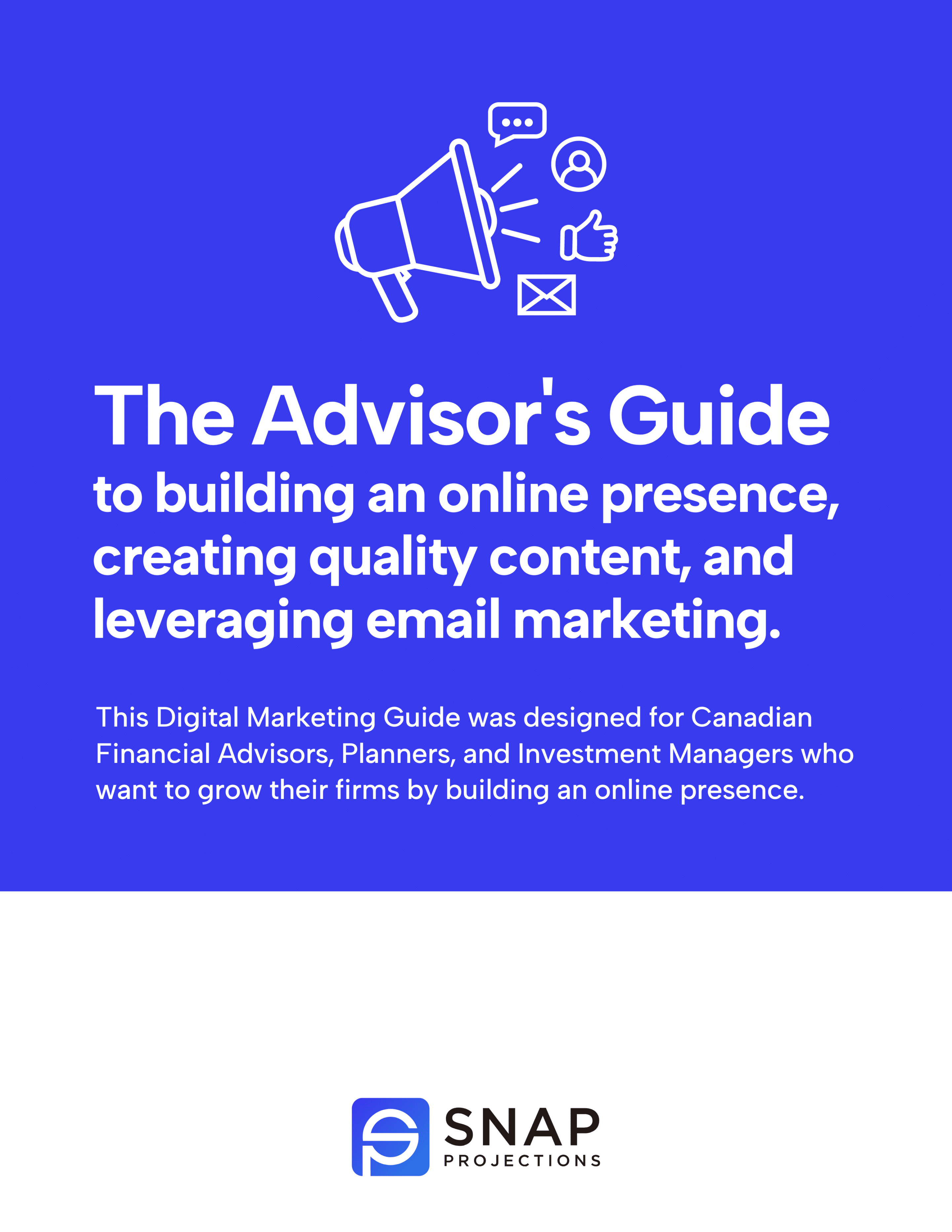This article is for Canadian Financial Advisors, Planners, and Investment Managers who are not currently using social media in their practices and would like to start. We are going to cover the basics to get the ball rolling. We will take it one step at a time and outline practical steps you can take to get started with building a presence on social media.
We will cover which channels you should consider, and then share some tools for scheduling content once you get there. I am not going to cover content creation in this post, as we have covered that previously: How Financial Advisors & Planners can start creating content in 5 easy steps, so be sure to come back to this one later.
Next week, we will cover getting started with email marketing more in-depth.
Creating a social media presence
Advisors and Planners can leverage various social media channels to connect with prospective clients. The choice of the best social media channels may depend on your target audience and the type of content you’d like to share.
When choosing social media channels, it’s important to consider the preferences of your target audience, the type of content you can create, and your marketing goals. Ideally, you want to work toward maintaining a consistent presence and engage with your audience regularly to build trust and credibility as a Financial Advisor.
The best advice with social media is always going to be to start small. Start with one platform first. Figure that out before incorporating a second into the mix. It’s not about quantity but quality, and you can apply that to essentially all marketing initiatives.
Here are some popular social media platforms for financial professionals:
- LinkedIn: LinkedIn is often considered the go-to platform for Financial Advisors. It’s a professional network where you can connect with professionals and share industry insights, financial tips, and updates about your services. You can also join relevant LinkedIn groups and participate in discussions.
- Facebook: Facebook is suitable for a broader audience. Financial Advisors can create a Facebook business page and share informative content, financial news, and engage with their followers. You can also run targeted Facebook ads to reach specific demographics.
- Twitter: Twitter is a great platform for sharing real-time financial updates, market news, and quick tips. It’s also a place to engage in discussions using relevant financial hashtags.
- Instagram: While primarily visual, Instagram can be used by Financial Advisors to showcase their expertise through visually appealing infographics, financial tips, and behind-the-scenes glimpses of their work. Instagram Stories can also be a valuable tool for engagement.
- YouTube: Creating educational videos and webinars is a powerful way to connect with prospective clients. Financial Advisors can use YouTube to explain complex financial concepts, provide market updates, and offer investment advice. YouTube videos are also an easy way to beef up your blog, when we get there.
- Pinterest: Pinterest can be effective for advisors who want to create and share financial infographics, tips, and other visually appealing content. It’s especially useful for engaging with female clients, as it has a predominantly female user base.
- Quora: While not a traditional social media platform, Quora allows Advisors to answer financial questions and establish themselves as experts in their field. By consistently providing valuable answers, advisors can attract potential clients seeking financial advice.
- Blogging Platforms: While not a social media platform, maintaining a blog on platforms like WordPress or Medium can help advisors share in-depth articles and insights. Sharing blog posts on social media can expand their reach.
- Professional Networks: Aside from LinkedIn, platforms such as Alignable can be beneficial for financial advisors looking to connect with a professional audience or local businesses.
- TikTok is also growing for the financial industry. There are many, many non-qualified people out there providing financial advice on this platform and more and more licensed professionals are getting on the platform to combat that.
If you’re just starting, I’d suggest beginning with LinkedIn.
You likely already have many contacts available to you on LinkedIn, so getting your account set-up is an easy place to start with a bit of a foundation. If you spend some time browsing, you will quickly find out there are many big players amongst the Canadian Financial Advisory space, and countless opportunities to engage with thought leaders and learn from them as you’re just getting started on your own social journey.
Additionally, this platform can act as a great substitution if you don’t have a website or blog up and running just yet. You can write articles directly on LinkedIn.
Once you establish a social channel or two and begin publishing regularly, you may want to use some form of scheduling tool. This helps ensure you maintain consistency, but it’s not something you need to worry about when you’re first beginning to publish.
Social Media Management Tools:
When the time comes, you can opt to use social media management platforms to schedule posts, track engagement, and analyze performance across various social media channels. These tools save time and allow for consistent social media presence.
Here are some of the most popular options:
- Hootsuite: Hootsuite is a widely used social media management platform that allows users to schedule posts, monitor social media conversations, and measure performance across various social networks
- Buffer: Buffer is a user-friendly tool that lets small business owners schedule and publish posts, engage with their audience, and analyze social media performance. It supports multiple platforms, including Facebook, Twitter, LinkedIn, Instagram, and Pinterest
- Sprout Social: Sprout Social is a comprehensive social media management and analytics platform that provides small businesses with tools for scheduling, publishing, engagement, and reporting on social media performance
- Later: Later is primarily known for Instagram scheduling and management, but it also supports Facebook, Twitter, and Pinterest. It’s a great choice for small businesses focused on visual content
- SocialBee: SocialBee offers content categories and posting schedules that help small businesses maintain a consistent social media presence. It supports various social networks
- Agorapulse: Agorapulse is a social media management tool with features for scheduling, engagement, and reporting. It covers major platforms like Facebook, Twitter, Instagram, LinkedIn, and YouTube
When you feel like you’re ready to take this step, you can choose a social media management tool based on your specific needs, budget, and the social platforms. These tools can save time and resources while helping businesses maintain an active and engaging social media presence.
We use Buffer, in case you were wondering!
Snap Projections provides transparent, highly flexible, and easy-to-use financial planning software for Canadian Advisors. If you’re a Financial Planner, Advisor, or Investment Manager, you can start a 14-day Free Trial here.
This article is a small part of Chapter 3, The Financial Advisor’s Marketing Guide.

